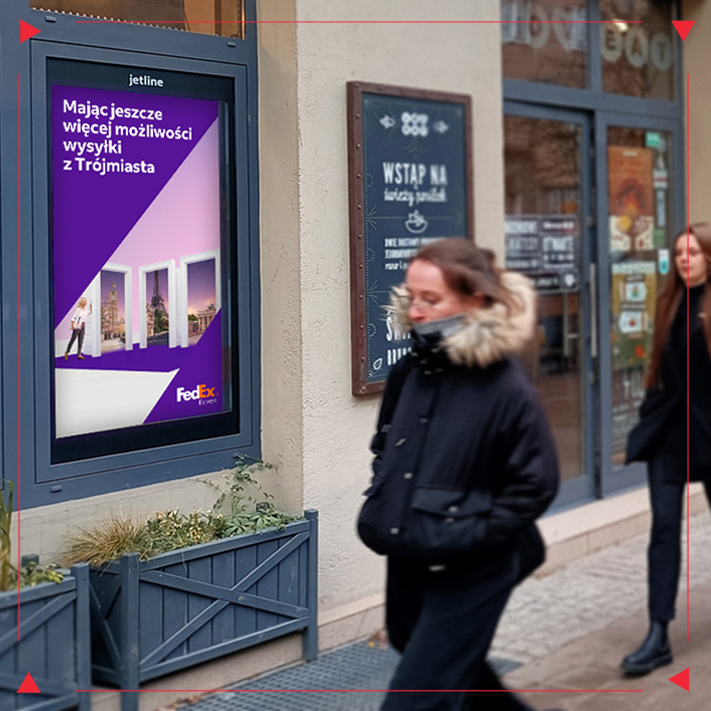Innovative Programmatic DOOH Campaign for FedEx
We have a nationwide network of MORE screens, while ARA and Hybrid AdTech provide the technology and expertise to implement it for advertising campaigns on Digital OOH screens. Screens in public spaces naturally became a communication medium, then leveraged the experience of the Internet. Today, they are another type of device (after desktops, mobiles, or smart TVs) on which campaigns can be run exactly as they are in online advertising.
In November, in cooperation with OMD Group, we completed a two-month campaign for FedEx. Our goal was to reach 1,500,000 viewers in the Tri-City area. We used elements of artificial intelligence, ARA technology, which provides precise audience measurement for every single broadcast. The average impressions multiplier for MORE screens for a single broadcast is 2.3. This enables real sales in the real CPM model.
Hybrid AdTech provided the platform and tools, while OMD Media House managed the campaign from the agency side, including integrating impression tracking codes on MORE screens.
Automatic is not Programmatic
The key was to use elements of artificial intelligence in both the audience monitoring process and campaign planning and execution. Live monitoring allowed us to modify and optimize the campaign to achieve the set campaign goals within a specified time.
OMD Group benefited from this innovation in their campaign for FedEx. The agency leveraged our technological capabilities, moving away from traditional outdoor planning and purchasing loop broadcasts in standard Tri-City locations. We used 45 MORE screens, knowing that in such a space and at this time, we could reach an audience even twice as large as expected, i.e., approximately 3,000,000. Therefore, we were confident about achieving the objectives.
This is the first 100% programmatic campaign, regardless of what we might have heard about it before. Automatic is not programmatic, which in fact is not simply about using technology, but about using it for a purpose.
Real-time broadcast optimization proved crucial to evenly execute the campaign within the specified time. This would not be possible with standard DOOH campaign purchases. Programmatic allows for flexibility and the ability to select the number of broadcasts and locations depending on the desired results. MORE screens and their loop positions thus became inventory available in DSP (Demand Side Platform), and the optimization of such activities reached a completely new dimension.
Thanks to our screens being equipped with ARA sensors, we have knowledge about the audience of each spot broadcast – this data allows us to introduce a new programmatic sales model, and guarantees our clients better campaign targeting, real-time results tracking, and better utilization of advertising budgets through purchase optimization.
So, why Do We Need Programmatic?
- We use the screens' available broadcast time more efficiently.
- We dynamically manage campaign intensity because we have data on the actually delivered audience.
- We spend the client's money optimally and report it in real-time, providing precise numbers.
In the implementation, we used elements of artificial intelligence, ARA technology, which provides precise audience measurement, not just estimation – and thanks to this, we can actually sell in the CPM model (in jet Line we say: real CPM, rCPM). Hybrid guaranteed the platform and tools.
- utilization of artificial intelligence elements in both audience monitoring and campaign planning and execution processes
- live monitoring allowing for traffic, campaign modification for optimization and achieving specific goals
Does this Mean that Digital OOH Campaigns Will Only be Bought and Executed Programmatically?
We don't think so, or at least not now. Campaigns on our screens can be run in parallel in a mix of traditional sales and those based on audience delivery and CPM sales.
However, we know that the share of campaigns in the CPM billing model will systematically grow. We are globally ready for this.

